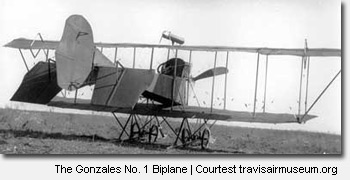 My nephews are in town this week so we took them to the Hiller Aviation Museum in San Carlos. While there, I stumbled onto a fascinating piece of aviation history that occured right here in the Richmond District.
My nephews are in town this week so we took them to the Hiller Aviation Museum in San Carlos. While there, I stumbled onto a fascinating piece of aviation history that occured right here in the Richmond District.
Back in 1912, two 15-year old twin brothers, Willy and Arthur Gonzales, flew their homemade biplane glider right here in the Richmond District. They had spent the previous two years building it in their backyard at 435 16th Avenue with help from older brother Eddie.
Known as the “Gonzales No. 1 Tractor Biplane”, the plane was constructed primarily of pine and small amounts of spruce, with wing support wires attached with bicycle spokes and spoke adjusters.
They based its design on photographs and drawings of other early airplanes they had seen in the area. Their aircraft was one of the first tractor propeller designs in Northern California. It was powered by a 35 horsepower, four cylinder air-cooled Kemp in-line engine.
As you’ll see in the photo below, children would come out to stand among the dunes and watch the brothers work with the plane. And with the ideal updrafts coming off the coast, it would take flight over the many dunes that still covered the outer Richmond District.
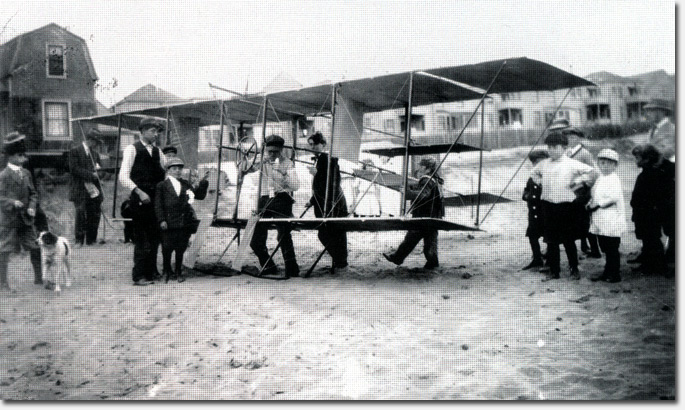
Courtesy of Lorri Ungaretti’s San Francisco’s Richmond District and the Hiller Aviation Museum.
Eventually, the city of San Francisco passed a noise ordinance which prevented flying machines from operating within city limits. As a result, the brothers crated up the plane and moved it back and forth by train to Woodland, CA near Travis Air Force Base where they would camp and spend time working on their plane. The plane could be dismantled and put back together in 8 hours.
In 1915, the Gonzales brothers moved to Los Angeles and took the biplane with them, where it remained in the Gonzales family for the next 70 years. In the late 1970s, Bob Gonzales donated the original plane and many of the twins’ writings and drawings to The Travis Air Force Museum.
Once at the museum, the center section of the fuselage was rebuilt from the original plans. All other parts of the airplane on display are original, including the Kemp engine which is still operable.
The “Gonzales No. 1 Tractor Biplane” is currently on loan to the Hiller Aviation Museum in San Carlos. So the next time you’re headed down the peninsula, stop in and see this great piece of aviation and Richmond District history.
Sarah B.
Information and photos for this article were gathered from San Francisco’s Richmond District by Lorri Ungaretti (thank you Lorri!), Hiller Aviation Museum, and Travis Air Museum.
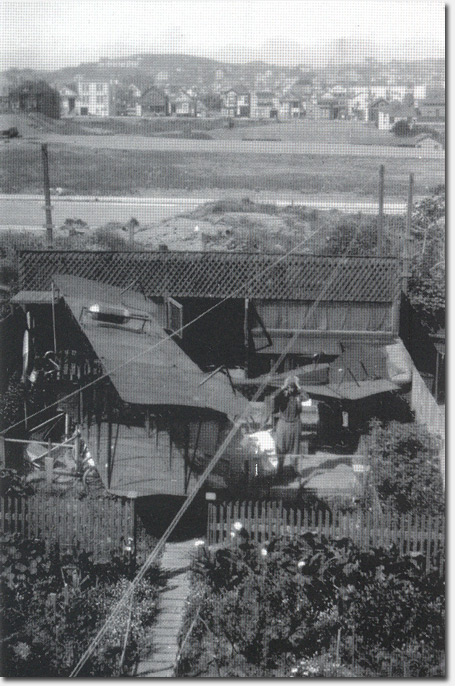
The Gonzales brothers’ biplane in the backyard of their home at 435 16th Avenue.
Courtesy of Lorri Ungaretti’s San Francisco’s Richmond District and the Hiller Aviation Museum.
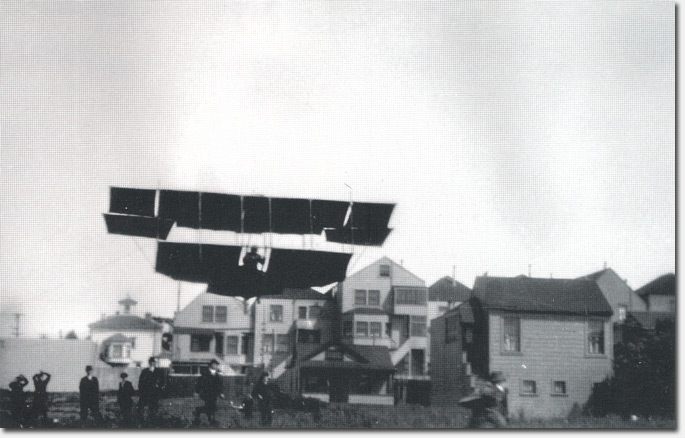
As the wind blows in from the Pacific Ocean, the Richmond District offers updrafts that are ideal for flying. However the Gonzales biplane flying over the neighborhood was still an unusual sight. Courtesy of Lorri Ungaretti’s San Francisco’s Richmond District and the Hiller Aviation Museum.
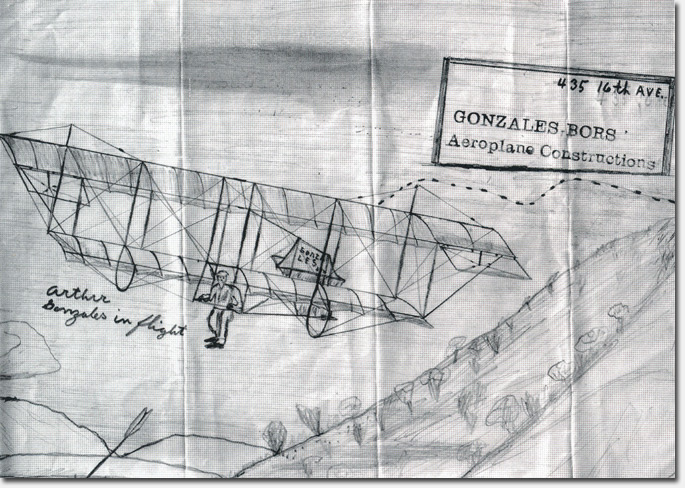
Arthur Gonzales drew this sketch of himself in flight. Note the typo in their rubber stamp (BORS instead of BROS). Courtesy of Lorri Ungaretti’s San Francisco’s Richmond District and the Hiller Aviation Museum.
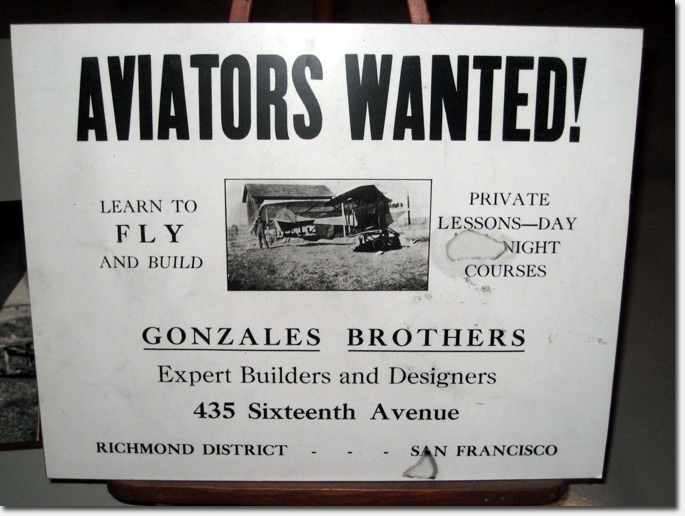
The Gonzales brothers operated a flying school and aircraft manufacturing business from the ground floor of their home. Here’s a sign they used to advertise. Courtesy of the Hiller Aviation Museum.
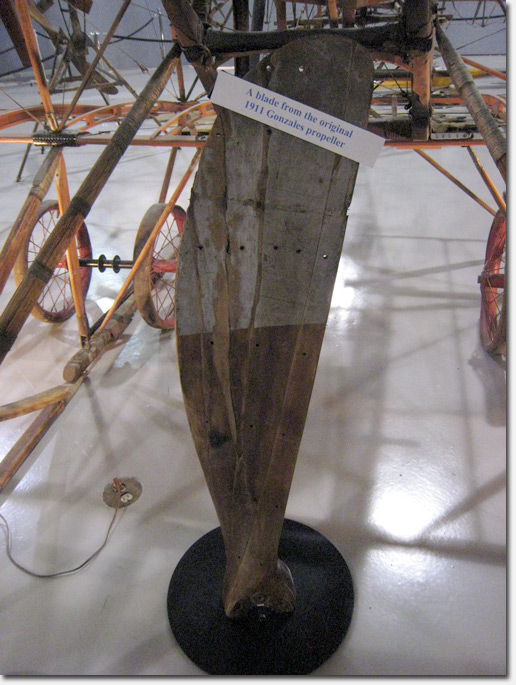
A blade from the original 1911 Gonzales propeller. Courtesy of the Hiller Aviation Museum.
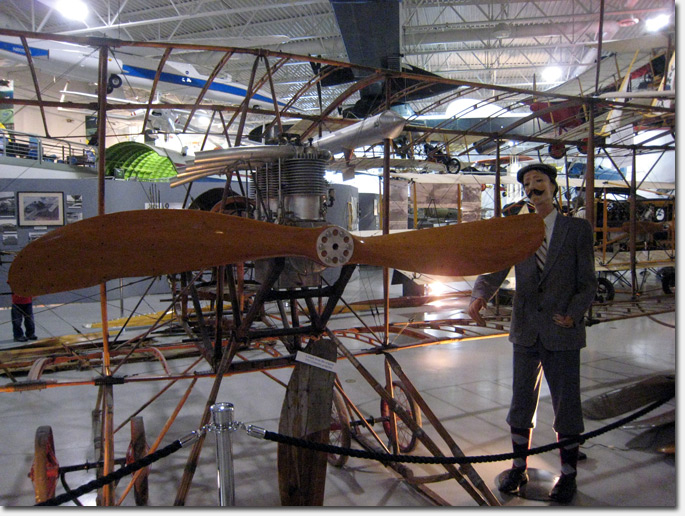
The “Gonzales No. 1 Tractor Biplane” on display at the Hiller Aviation Museum.
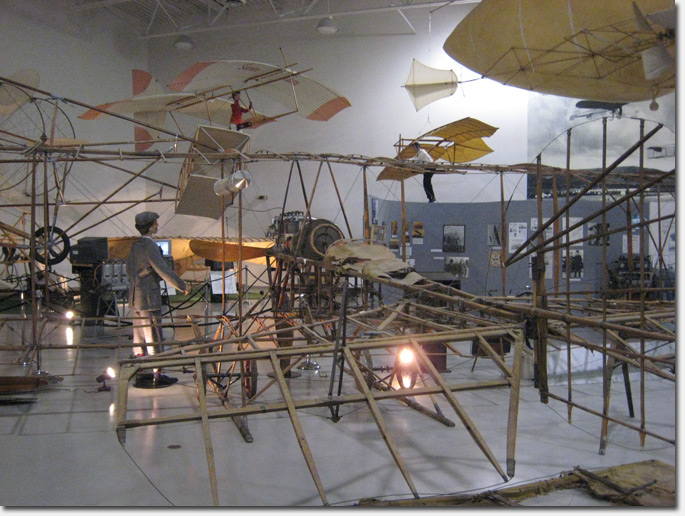
A look at the “Gonzales No. 1 Tractor Biplane” from the back of its display in the Hiller Aviation Museum.
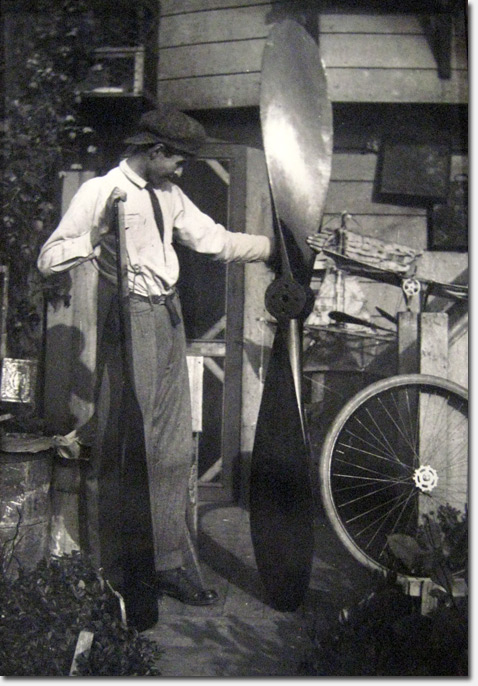
One of the Gonzales brothers prepares the propeller for transport to Woodland, CA. Courtesy of the Hiller Aviation Museum.
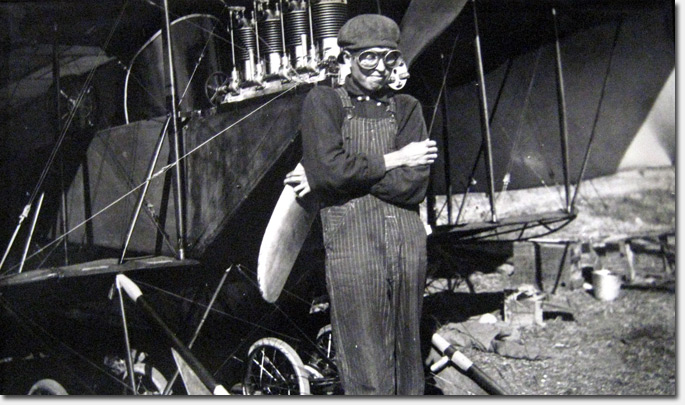
One of the Gonzales twins in front of their plane. Courtesy of the Hiller Aviation Museum.
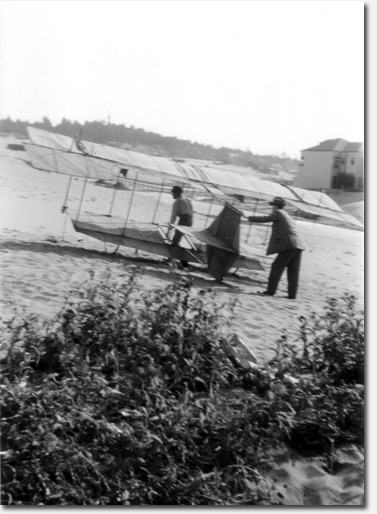
The plane on the dunes of the Richmond District. Courtesy of Lorri Ungaretti and the Hiller Aviation Museum.
Great post! Folks generally think SF aviation is about Lincoln Beachy or the Presidio.
Wow Sarah, awesome story! Mucho mahalo.
In the east bay, the jacuzzi brothers produced a variety of aviation-related innovations including a pitched propeller developed for the American government and the first enclosed cabin monoplane which was used to carry mail and passengers for the U.S. postal service.
Very interesting story about some brave young men.
Thanks for sharing!
Fascinating and awesome. Yet another Richmond District happening to be proud of.
Great story Sarah. Thanks for this!